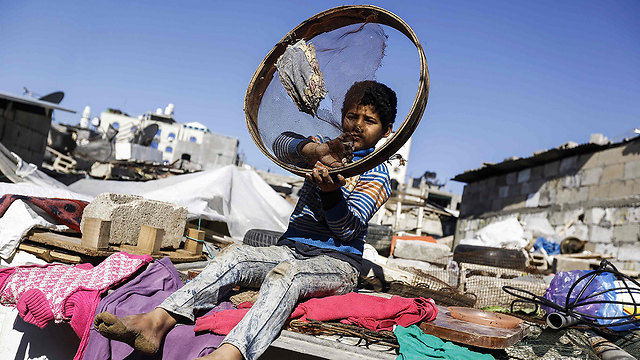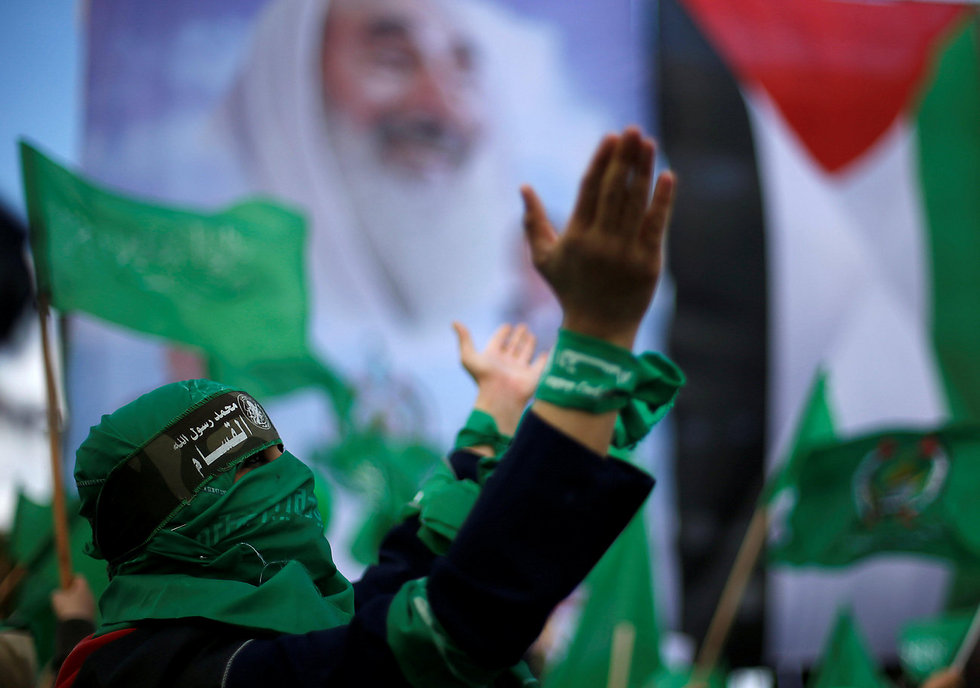
Children in the Gaza Strip. A disastrous situation
Photo: Reuters

Nadav Eyal

Before Gaza turns into Somalia
Op-ed: To save the strip from a collapse, which will naturally become Israel’s problem, there is a need for an international humanitarian intervention that will get rid of the Hamas rule one way or another; while Israel is incapable of leading such an intervention, it can explain its urgency to the world.
The “drizzle” of missiles
from the Gaza Strip at Israel’s southern communities has been going on for more than a week now. For the residents and their children, who are forced to run into bomb shelters, it doesn’t feel like a drizzle but rather like ongoing torture.


Since US President Donald Trump’s recognition of Jerusalem as Israel’s capital, four Palestinians have been killed by IDF fire on the Gaza border, including a double amputee. Another round of fighting in the south won’t take anyone by surprise, but this time we need to rethink the situation.

Both the IDF and the UN secretary-general agree that Gaza is on the verge, or beyond the verge, of a serious humanitarian crisis (Photo: AFP)
International law forbids the use of force between two states. The United Nations Charter states two basic exceptions to this rule: Self-defense and military measures approved by the UN Security Council to “restore international peace and security.” There is an agreement that self-defense could also include preventive measures, like the ones Israel took in the Six-Day War.
Recent decades have seen the development of a practice of another exception to the prohibition on use of force—humanitarian intervention. The idea behind armed humanitarian intervention is that it is sometimes the international community’s duty to protect citizens from an intolerable situation of government abuse and atrocities, and that such an intervention could be legal even if it is not self-defense and even if it wasn’t approved by the UN Security Council—like in the 1999 NATO bombing of Kosovo.
The Gaza Strip is not a state, but a semi-independent political entity. It is controlled by a violent fundamentalist organization, which forcibly seized power from the (unelected) Palestinian government.
The situation in Gaza is disastrous: About 95 percent of the water in the strip is undrinkable; huge amounts of wastewater are discharged into the sea following the sewage system’s collapse; the unemployment rate is around 40 percent; there is no power most hours of the day; there is a chronic malnutrition crisis, mainly among children; and the health systems are on the verge of collapse.
Both the IDF and the UN secretary-general agree that Gaza is on the verge, or beyond the verge, of a serious humanitarian crisis. The reconciliation process between the Palestinian Authority and Hamas, which should have perhaps improved the situation in the strip, has basically collapsed.

Gaza is a semi-independent political entity controlled by a violent fundamentalist organization (Photo: Reuters)
This is a horrible situation, first and foremost for the Gazan citizens and children who are suffering tremendously. But when it comes to Israel, this situation has strategic and practical implications. It was Israel that initiated the basic change in the situation in Gaza, twice: First in the Oslo Agreements, and then in the disengagement. The Gazans supported Hamas, and they paid and keep paying a heavy price for it—in the terror organization’s cruel policy inside the strip and in Israel’s siege policy.
History and its lessons, however, won’t change the basic situation: Gaza’s collapse and a humanitarian crisis in the strip will become Israel’s problem. Whether right or wrong, that’s what will happen, and that’s why the coordinator of government activities in the territories sent a letter to the UN warning of a humanitarian crisis in the strip. Furthermore, there is a possibility that Gaza will turn into Somalia, and if that happens, Hamas itself may lose its effective ability to control the different organizations in the strip which are now firing rockets at Israel.
There is a need for an international humanitarian intervention in the Gaza Strip, which will get rid of the Hamas rule one way or another. Israel is not a good candidate for such an intervention; it will be suspected of trying to reoccupy the strip from Hamas, its bitter enemy. It is perfectly clear that neither the Egyptians nor the Arab League or the PA forces would be interested in launching a military intervention, and it’s also clear that the West—which has grown weaker in the past decade—will have trouble doing so too.
Nevertheless, Israel should lead this approach as soon as possible and try to find supporters. It should explain that an Israeli humanitarian intervention is out of the question because of the country’s history of conflict with the strip, but that such an intervention is necessary and urgent. It is necessarily to restore security in the region, it is necessary for the south’s residents, and it is certainly necessarily for millions of Gazan citizens who are living in hell. The world, Israel and Egypt cannot afford a Somalia or South Sudan in Gaza.
Nadav Eyal is Channel 10's chief international correspondent.















